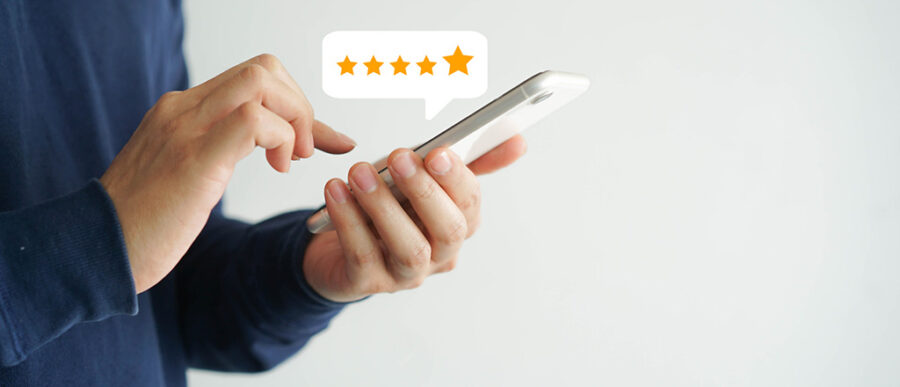Customers have long expected service with a smile, which was a reasonable request before the pandemic radically altered the risks and rewards for frontline workers.
Now, those in customer-facing jobs have tough choices to make about how much danger they are willing to deal with in order to be seen as ideal workers devoted to their tasks. New research from Wharton management professor Lindsey Cameron reveals the arsenal of tactics that gig workers are using to mitigate health risks while managing their reputation with demanding customers during the pandemic.
“When you have contingent work and don’t have the structure of an employment relationship, you are much more precarious,” she said. “There’s heightened pressure on customer-facing workers during the pandemic because it’s not only that you need to be devoted and available all the time, but also how much risk you’re going to take on and how much you’ll be smiling while you do it.”
The study is titled “Risky Business: Gig Workers and the Navigation of Ideal Worker Expectations during the COVID-19 Pandemic,” and it was published in the Journal of Applied Psychology. The co-authors are Bobbi Thomason, applied behavioral science professor at Pepperdine Graziadio Business School, and Vanessa Conzon, management professor at Boston College’s Carroll School of Management.
The authors studied TaskRabbit, an on-demand platform that allows customers to hire independent workers to run errands, deliver items, and do household chores such as assembling furniture. They analyzed data from direct interviews with workers, postings from worker forums on social media, official company communications, and articles from major media outlets.
“When you have contingent work and don’t have the structure of an employment relationship, you are much more precarious.” –Lindsey Cameron
Similar to Uber and Lyft, TaskRabbit customers rate workers on a scale of 1 to 5. Workers who maintain a higher rating are featured on the site, which can lead to more bookings. But unlike ride-sharing companies, which saw a steep drop in demand at the start of the pandemic, TaskRabbit’s demand surged as consumers outsourced jobs with higher potential exposure to the virus — such as grocery shopping or standing in line. As millions shifted to working from home, they also hired for things like putting together new furniture purchases or gym equipment.
“These workers always faced a lot of risk in their work, but the pandemic puts physical risk front and center,” Cameron said. “Gig workers are the canary in the coalmine.”
The study found workers engaged in four types of tactics:
Passing – Workers present as ideal while protecting themselves in ways that are not visible on the platform to the customer. This includes changing the services they offer to avoid physical contact (e.g., remote-only computer support, no grocery shopping), or making their profile visible only to repeat customers to create a smaller bubble of contact.
Revealing – Workers openly protect themselves in ways that deviate from customer expectations, and they do not refocus customer attention away from that deviation. For example, they arrive at the job wearing masks and gloves, eschew handshaking or other physical contact, or ask customers to leave the room while they complete the assigned task.
Covering – Workers deviate from customer expectation to protect themselves, but they refocus the customer’s attention away from the deviance. For example, workers reframe their mask- and glove-wearing as care and concern for the customer, or they emphasize their competence and skill rather than the risky behavior.
Withdrawing – Fearing for their health, workers didn’t accept any jobs and dropped off the platform altogether.
The first two tactics have been highlighted in previous research, but the last two — covering and withdrawing — are new and a significant contribution to the literature.
“I think covering is the intellectual gem of this paper because people in this type of work have to appease the customer,” Cameron said. “Covering speaks to the ingenuity of people in resource-constrained situations. They are going to be very creative and figure things out.”
“In any sort of customer-facing work, there are increased demands because the customer is king.” –Lindsey Cameron
Cameron said it’s important to note that many workers used a combination of tactics, suggesting that they weave together a management identity to navigate the gap between risk and customer expectations. Many others simply “embrace” the health risk, acknowledging that they can’t escape it and want to make money doing what others won’t.
The limited options faced by lower- and middle-wage workers are part of what drew Cameron to the study. She was also inspired by her mother, who lost her job as a middle manager in a call center during the Great Recession and spent the next eight years cobbling together odd jobs. Cameron said there’s plenty of management research about professional workers, but not enough on the most vulnerable workers.
“This is my pet peeve. Management research is so geared towards professional work. But that’s not the people who are enabling our daily lives. There are so many people delivering the coffee, croissants, and newspapers at 4 a.m. so that we don’t have to make our breakfast,” she said. The pandemic has increased consumer demand for many types of gig work, and in any sort of customer-facing work, there are pressures because the customer is seen as king. This is especially when a bad rating can hurt you from getting future work on the platform.”
The study is one of six that Cameron is conducting on gig work. A previous paper looked at how independent workers created meaning to find satisfaction in their temporary jobs.



